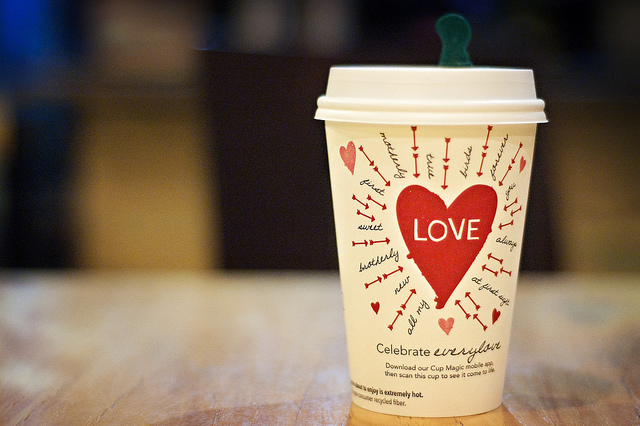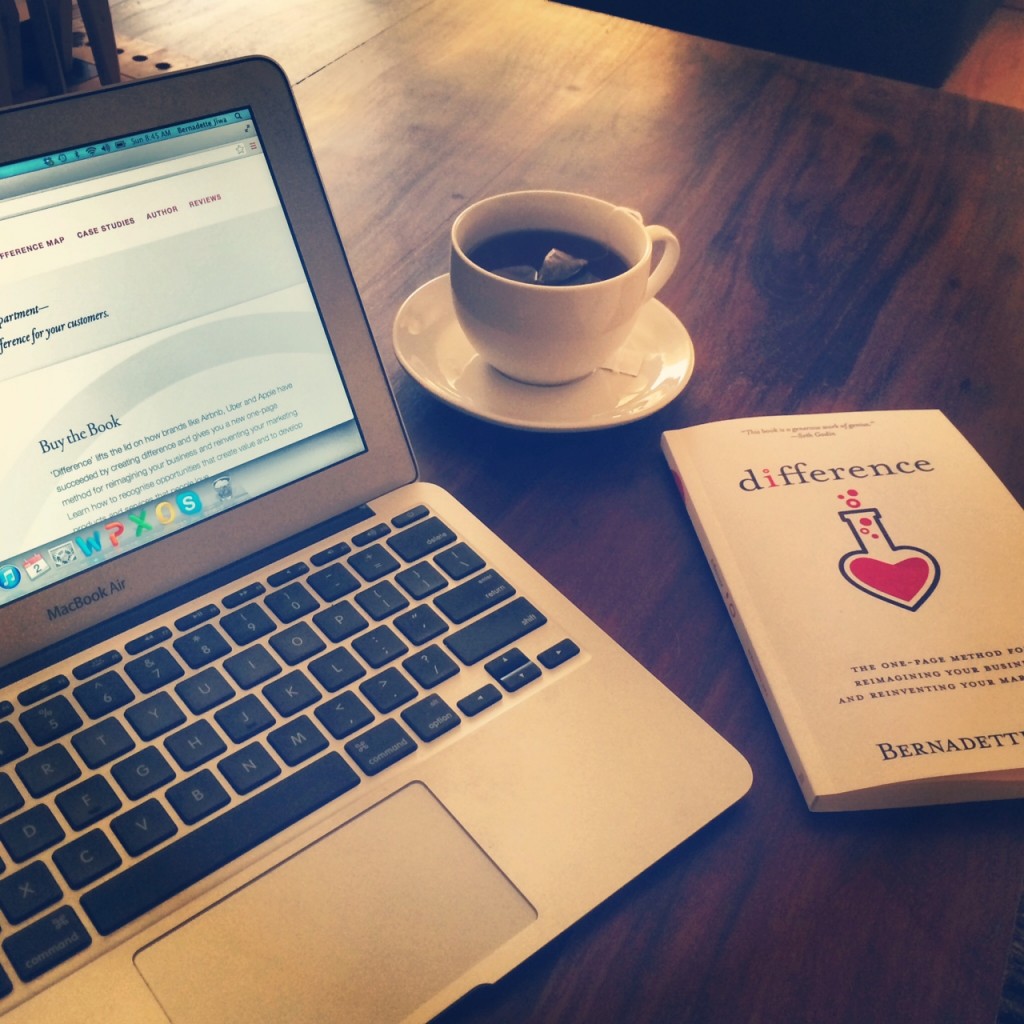Unlock the Magic in Your Story Now
Get the Free 20 questions to Ask Before Launching Your Idea workbook when you sign up for occasional updates.
Get the Free 20 questions to Ask Before Launching Your Idea workbook when you sign up for occasional updates.
How To Get The World To Beat A Path To Your Door
 Traditional marketing in essence has been about doing something today in the hope that your business will reap the rewards in sales tomorrow. The marketer then has her eye firmly fixed on the future. Asking the question, ‘what do I need to do to get us from here to there?’
Traditional marketing in essence has been about doing something today in the hope that your business will reap the rewards in sales tomorrow. The marketer then has her eye firmly fixed on the future. Asking the question, ‘what do I need to do to get us from here to there?’
And yet the best marketing happens in the moment, when the entrepreneur, CEO, waiter, designer or developer takes the time to quietly practice empathy. It turns out that we are at our very best when we really see the world through the eyes of the person we’re trying to matter to.
That’s easy to write and much harder to do than it sounds.
The key to mattering to your customers is to actually care about them just as much, if not more than you do about the success of your business. One of the values of the renowned design firm IDEO is to make others successful, as they say—”going out of your way to help others succeed is the secret sauce.”
Perhaps the question we should be asking, one we don’t ask half often enough is:
“What can we do to get our customers from here to there?”
If you do that often enough the world will beat a path to your door.
Image by Lynda Giddens.
Share this article
Thinking About Your Assets
filed in Entrepreneurship, Storytelling, Strategy
 Take a blank page. Draw a line down the centre. On one side list your tangible assets, things like stock, equipment, products and your website.
Take a blank page. Draw a line down the centre. On one side list your tangible assets, things like stock, equipment, products and your website.
On the other side make a list of your intangible assets, stuff like intellectual property, trademarks, brand names, the skills of your team, your customer database, reputation and the trust you have built over time.
Now one by one cross off the things that your competitors can easily replicate or acquire, on both sides of the list.
TANGIBLE ASSETS
Stock
Website
Equipment
Cash Balances
Product Lines
Property
INTANGIBLE ASSETS
Brand name
Logos
Trademarks
Patents
Formulas
Customer Database
Skills
Reputation
Customer Loyalty
Trust
What are you left with?
As we build our businesses, we often work hardest on the things that are replaceable, believing that our advantage is in the tangible value we provide and can demonstrate. The cup of coffee brewed, the line of perfect code written. But in a world where there are six cafés on every street and 200,000 programmers for hire on Elance in two clicks of a mouse we need to think more deeply about what really matters to our customers and clients. People place a premium on the things that you can never hand them over the counter (real or virtual). It turns out that trust is the scarcest resource we have.
If you want to build a truly great business put your energy into the things that can’t be crossed off the list.
Image by Death to Stock.
Share this article
5 Things Your Brand Name Must Do
filed in Marketing, Storytelling, Strategy
 Brand naming is tough. There are so many variables to consider and the finality of saying ‘that’s it’, feels like a huge decision. Your name is probably the first encounter a potential customer will have with your business. A brand name has to stand the test of time and wear a lot of hats.
Brand naming is tough. There are so many variables to consider and the finality of saying ‘that’s it’, feels like a huge decision. Your name is probably the first encounter a potential customer will have with your business. A brand name has to stand the test of time and wear a lot of hats.
5 Things your brand name must do
1. Make the right people curious to know more about your story.
A great brand name is your opening move, your chance to hold people for a second longer and then to keep the conversation going. Does it speak to the people you hope will become your customers? People have been so curious about how the Warby Parker name came to be that the name itself has become a story. It’s been more than just a label for their products, the company name is an asset to the business.
2. Tell people something about who you are and what you stand for.
People will attach meaning in an instant. Is your company imaginative, ambitious, caring or forward thinking?
What does Apple say that Microsoft doesn’t? Your name needs to connect with people. How does yours signal your intention for your business?
3. Be easy to say, share, spell and pass along.
Err….how do you pronounce that again?
4. Be legal.
You don’t want to build your brand only to find you’ve stepped on the intellectual property toes of another company. Check trademark records, business name registers and if in doubt get the help of a lawyer who will do the checks for you.
5. Have domain name and social media username availability.
The .com debate rages on. Startups find great workarounds with .co, .cc, .io, .is domain extensions and by adding prefixes like the words ‘meet’ and ‘get’. Check social media username availability at NameChk.
This tool saves my life daily when I’m developing brand names for clients.
There is one thing your brand name shouldn’t do and that’s prevent you from starting. I’ve seen it time and time again. People get stuck trying to find the perfect name, so stuck that this holds their project up for months—sometimes forever. An idea that’s out there making an impact in the world is better than perfection.
Image by Deiby.
Share this article
It’s Here—The Book That Will Reinvent Your Marketing

It’s incredible to think about the changes that have happened to our lives and businesses in the last decade. Now instead of guessing what our customers are thinking we can actually listen to what they want. We can see what they are doing all of the time, in real time. And yet, we’re still using a marketing model that was designed to sell things to our grandparents. It’s not working.
That’s why I wrote my new book Difference to give you a one-page method to reimagine your business and rethink your marketing.
You can buy it now on Amazon Kindle or in paperback.
I want you to be able to tap into what your customers really want from you—something you already have, but that you’re not yet communicating.
What’s inside?
Difference is 100 pages of insights and strategies to take you from where you are to where you want to be. This book has zero padding, it gives you what you need in a bite-size volume. My aim is to give you the tools to get to work as soon as possible.
I have deconstructed how some of the most successful, emerging businesses have gained both market and heart share, and created a tool that will allow you to do the same.
You can download the Difference Map for free and use it to plan world domination.
The book also gives my take on how these businesses have succeeded by creating difference. You’ll learn the distinction between simply being different and creating difference and the case studies of businesses that have done this will be useful reference tools. You can read more about the book and share the resources from it at the difference.is website.
This book needs you too
I thought Difference should practice what it preached. There is no big publishing engine behind this book, no PR department and zero marketing budget. No press release, no blog tour or guest posts—just you and me and my intention for how this book can help you.
When you’ve read the book I’d be grateful for honest two line reviews on Amazon.com. They help people to find the book and to know if it’s for them or not. They help the book too!
The job of every entrepreneur, innovator and marketer going forward is not to ask customers to notice us. Our job is to really see them.
I tried hard to see you as I wrote this book. I hoped I’ve managed to do that.
*UPDATE: Thanks for helping to make Difference a #1 Amazon Bestseller in three categories, alongside legendary books like The Lean Startup within just 12 hours of this post going live.
Share this article
Was Everything Okay?
 The table was clean. The waitress arrived to take coffee orders within a couple of minutes. We tried to ignore the peeling corners of the laminated menu.
The table was clean. The waitress arrived to take coffee orders within a couple of minutes. We tried to ignore the peeling corners of the laminated menu.
The food and the coffee were fine. The waitress polite in a ‘going through the motions’ kind of way. Her parting question as we paid the bill…..
“Was everything okay?”
Yes actually, everything was okay. We had no complaints, nothing to report and that, I guess is the problem for most businesses and it’s also the opportunity for you. Every day we have experiences that are nothing to write home about, micro make-or-break moments. Feelings that exist, but that we can’t explain. Changing how we feel in those moments is so important that Apple has a secret packaging room where designers test which box designs evoke an emotional response.
My friend Stuart who is an entrepreneur and gifted app developer once told me that what differentiates a great app from a good one is the feeling that a level of love has been put into it. Living in a digital age has conditioned us to expect. The goal posts for exceptional have shifted and it’s almost impossible to make a product or service fly now without that level of love.
We simply know it when we feel it. We don’t want everything to be okay anymore.
We want to feel the love.
Which brands change how you feel in the moment and why?
Image by Mark.
Share this article
It’s Harder To Matter On Purpose
 It’s easy to think about what it would be like to build your business around the quick win. To be the author of the book discovered by a random stranger at the airport, or the designer who gets picked by the awards committee.
It’s easy to think about what it would be like to build your business around the quick win. To be the author of the book discovered by a random stranger at the airport, or the designer who gets picked by the awards committee.
It’s much harder to matter on purpose, to be intentional about the people you want to serve and to work out how you’re going to create difference for them.
That’s the reason more businesses don’t take the time to do it, and it’s also the reason for the success of the ones that do. There’s nothing to stop you being one of them.
Image by Sebastiaan ter Burg.
Share this article
30 Questions Every Startup And Entrepreneur Should Answer
filed in Entrepreneurship, Storytelling, Strategy
 We’ve become really good at looking for answers. So good in fact, that we get close to asking
We’ve become really good at looking for answers. So good in fact, that we get close to asking
a billion questions every day in Google search.
And yet as busy business owners and idea creators, we struggle to find time to ask really important questions of ourselves. Here then, are questions worth taking the time to answer.
30 Questions for every startup and entrepreneur
1. Why are we doing this?
2. Why are we the people to do it?
3. Why is now the time to start?
4. What will happen because this idea exists?
5. How will this change how people feel about x?
6. Who is it for?
7. Why will they care?
8. What do the people we hope to serve want?
9. What do they believe?
10.How do they feel about the problem we solve?
11.What do they do—where, when, why and with whom?
12.What will customers say to their friends to recommend this product or service?
13.How can we make customers feel good because they recommend it?
14.What are we really selling beyond the utility of the product or service?
15.How can we add more value?
16.What happens because our business or project exists?
17.How will people find us?
18.Where are they already looking, or not looking?
19.What’s our greatest strength?
20.What weakness might get in the way if we don’t address it?
21.What does success look like, today, this year, next and five years from now?
22.What do we value?
23.What do we want to change?
24.What promises do we want to make and keep?
25.What matters most right now?
26.What’s going to matter more three, six or eighteen months from now?
27.What’s our difference?
28.What do we need to do today, to make sure that we can keep doing the things we want to do tomorrow?
29.If we could do anything today would this be it?
30.If not this then what?
When you know what you want, where you’re headed and why almost nothing can stop you.
Image by Darkwood67.
Share this article
Significance Could Be Your Competitive Advantage
filed in Marketing, Storytelling, Strategy
 You’re late for an appointment and in your rush to get out the door you forget to put everything into your bag.
You’re late for an appointment and in your rush to get out the door you forget to put everything into your bag.
QUESTION
Which would you rather FORGET to bring with you, your wallet or your phone?
2006 ANSWER
PHONE.
2014 ANSWER
WALLET.
A competitive advantage isn’t always as tangible as the patents you file, or processes you put in place.
So don’t just set out to create a better product. Set out to change the meaning people will one day attach to it.
Image by Garnet.
Share this article
Success Is How Your Customers Feel
 You’ve just had a great launch. You made your monthly sales targets. Your stock sold out in one day. There are a hundred and one reasons to celebrate, and one thing to remember.
You’ve just had a great launch. You made your monthly sales targets. Your stock sold out in one day. There are a hundred and one reasons to celebrate, and one thing to remember.
Success is not just a data point that you hit on the sales chart, or a dollar figure that makes your accountant happy.
Success is how your customers feel.
How are you measuring that?
Image by Ed Yourdon.
 Your idea is not a virus and here’s why. A virus doesn’t care who it infects. Everyone is a target.
Your idea is not a virus and here’s why. A virus doesn’t care who it infects. Everyone is a target.